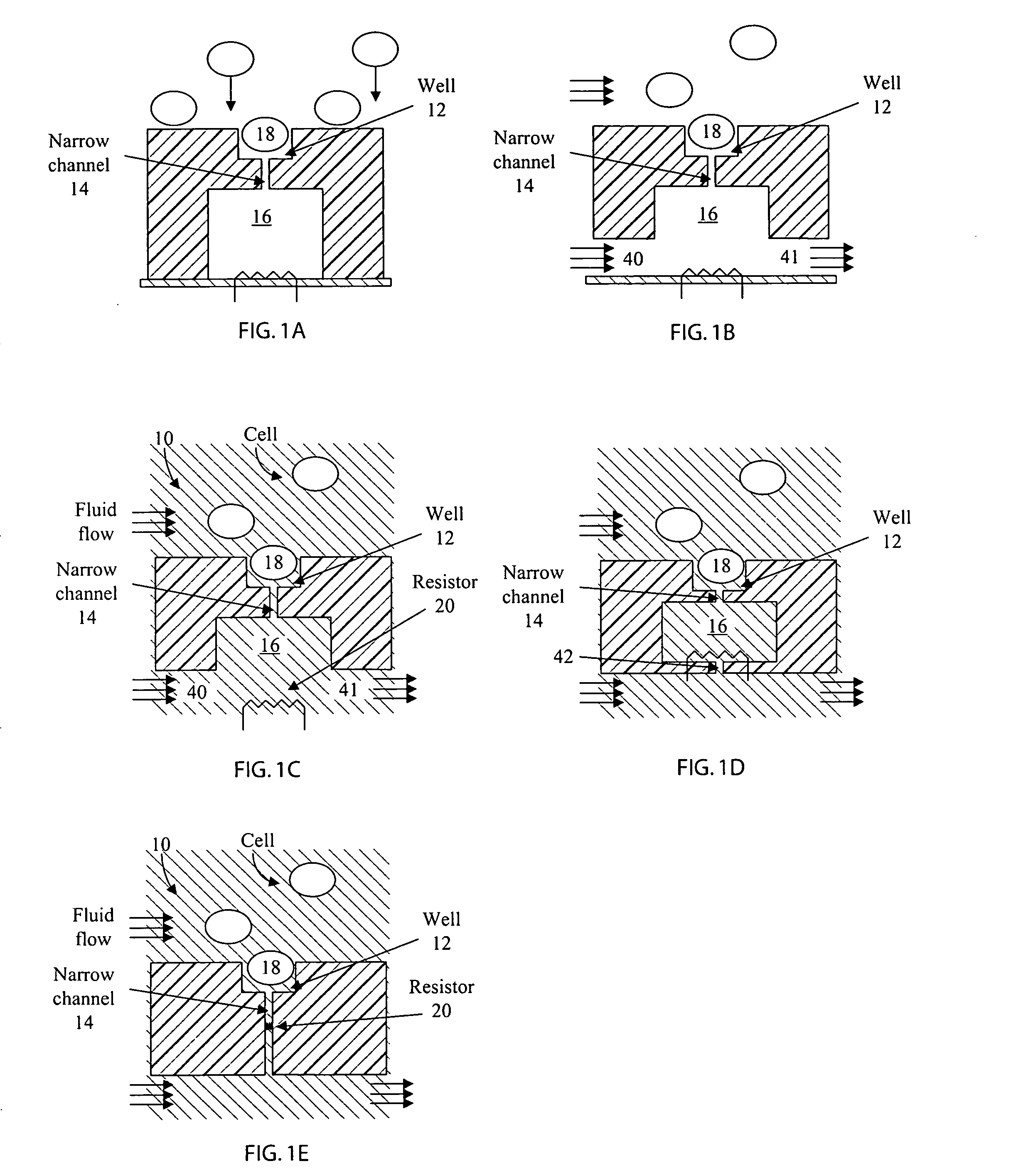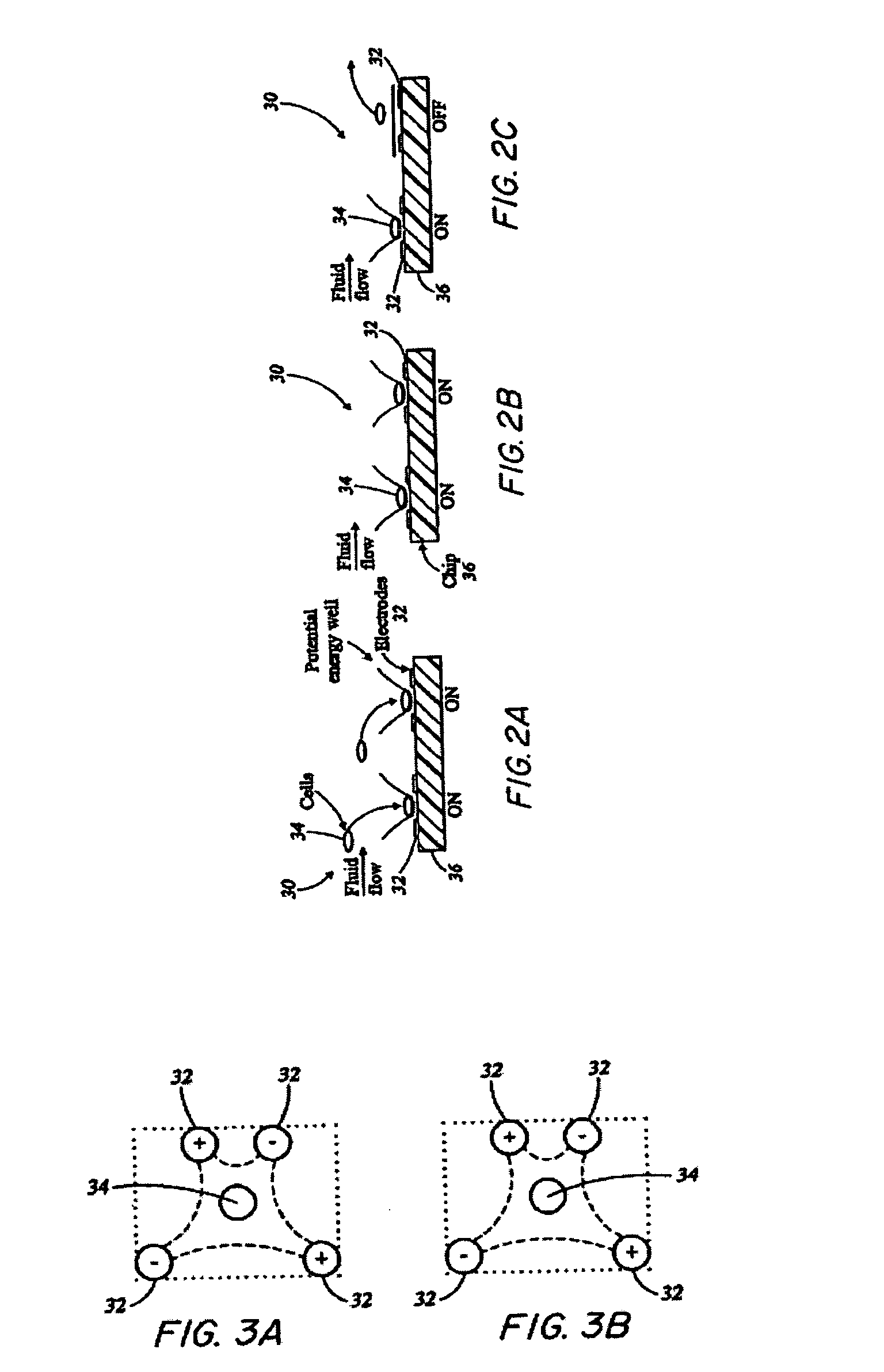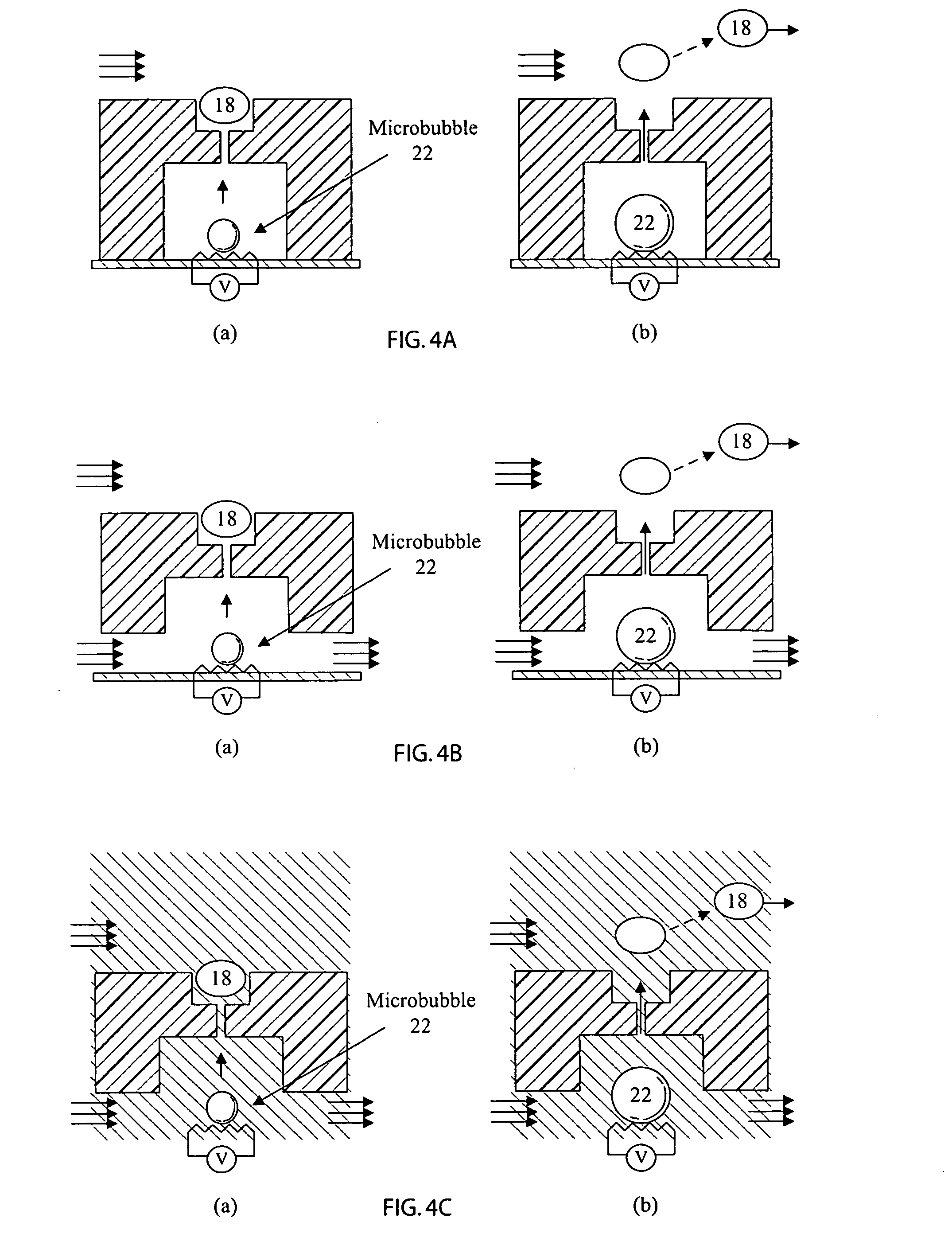Hydrodynamic capture and release mechanisms for particle manipulation
- Summary
- Abstract
- Description
- Claims
- Application Information
AI Technical Summary
Benefits of technology
Problems solved by technology
Method used
Image
Examples
Embodiment Construction
[0048]FIGS. 1A-1E illustrate exemplary capture mechanisms according to the present invention. In FIG. 1A, a particulate site 10, shown in cross-section, contains a well 12 that is sized and shaped to hold a single particulate 18. Connected to the bottom of the well 12 is a narrow channel 14 that opens into a chamber 16 situated below the well. In this particular example, the well 12 and narrow channel 14 are etched out of a silicon wafer or casted from a material such as polydimethylsiloxane (PDMS). The silicon wafer or cast is attached to a glass slide on which there is a heater 20, and the alignment is such that the heater 20 is sealed inside the chamber 16, which is filled with a fluid such as water or cellular medium.
[0049] The well 12 functions as a capture and hold mechanism to trap a single particulate. In the embodiment of FIG. 1 A, gravity is utilized as the capture mechanism to trap the particulate in well 12. In operation, fluid containing particulates are flown over the...
PUM
 Login to View More
Login to View More Abstract
Description
Claims
Application Information
 Login to View More
Login to View More - R&D
- Intellectual Property
- Life Sciences
- Materials
- Tech Scout
- Unparalleled Data Quality
- Higher Quality Content
- 60% Fewer Hallucinations
Browse by: Latest US Patents, China's latest patents, Technical Efficacy Thesaurus, Application Domain, Technology Topic, Popular Technical Reports.
© 2025 PatSnap. All rights reserved.Legal|Privacy policy|Modern Slavery Act Transparency Statement|Sitemap|About US| Contact US: help@patsnap.com



